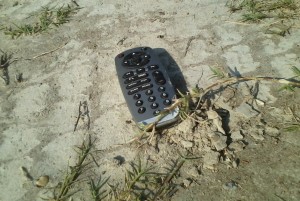When it comes to remote controlled products, there are several trends in today’s market that consumers are putting on their preferred features lists. It’s no longer enough to have remote control keypads for electronics. What’s new and creating competition among product designers and developers is the concept of making them easier and more durable to use. As a result, silicone rubber keypads are becoming the go-to material for remote controls. From cameras and toys to drones and military equipment, rubber keypad remotes serve many different purposes. Here are 6 trending features for remote controls for new product technology.
Compact
For people on-the-go, their remote controls need to be small enough to slip into a purse, tuck into a pocket or stow in a backpack. The specific devices might need a wide range of buttons or just 2 or 3, depending on the range of functions needed. Depending on how many functions there are, the rubber keypad control may need to be foldable or extendable. Keypads more than about 2 inches wide could be difficult to grasp in one hand. Those more than about 4 inches long will extend beyond the palm. Meanwhile, buttons must be large enough to push without running the risk of people with large fingers or gloves activating other features.
Single Hand Capability
Multi-tasking is a fact of life. Using a remote control is commonly done by people with only one hand to spare. The device should be designed with this in mind to make it lightweight and user-friendly. Buttons should be easy to reach within a thumb’s distance from the side of the remote. They also shouldn’t be too close to the edge of the unit, so that users can draw their thumbs backward far enough to press the right button on the rubber keypad. Engineers who think ahead have also worked around a right-handed versus left-handed design, making the rubber keypad ambidextrous.
Dormant
One of the most important features in remote control devices for modern consumers is that it has a dormant mode. Whether it’s a cover or a security code or a voice-activated power button, something needs to prevent devices from activating when they’re not meant to. From random impacts or hip dialing to being dropped or stolen, remote devices need a feature to turn them off or go dormant as needed.
Durable

Waterproof
Wherever people go, so go their devices. That means there’s a demand for use underwater, in the rain or in moisture from condensation. Waterproof keypads are a requirement. Some silicone liquid injection molding companies can create wraparound designs for their rubber keypads so that they’re not only more durable, but waterproof as well. Drops in the ocean, mud puddles and the sink won’t affect the device.
Backlit
Some of the latest technology for cameras and sports is used in very dark or very bright surroundings. Backlit rubber keypads make controls buttons stand out for use in any lighting conditions.
View our SiTECH Corp Application Guide to learn more about materials, tolerances and design recommendations for remote control rubber keypads.








